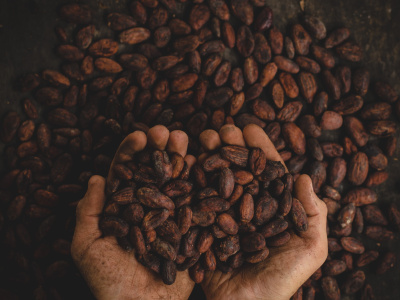
The Recent Natural Resource Hype in Mozambique: Putting it into Context
During the past decade Mozambique posted one of the highest and most sustained economic growth performances in Africa. According to the African Economic Outlook average economic growth over the past decade was 7.2% and is set to increase to 7.5% and 7.9% for 2012 and 2013 respectively, driven by the continuation of high foreign direct investment (FDI) inflows, together with strong agricultural growth and infrastructure investment.
The country’s recent high economic growth rates have largely been driven by a few, highly capital-intensive mega projects, particularly in extractive industries. Following the Central Bank’s tight monetary policy inflation is projected to keep decreasing to 7.2% and 5.9% in 2012 and 2013 respectively. This good performance should result in an average annual increase of GDP per capita of over 5% for the coming two years.
Growth with a limited impact on poverty
Despite these high growth figures the impact on poverty reduction has been limited, as shown in the last household budget survey. In addition, it diverts away the attention to the country’s longstanding dependency on foreign financial flows and its weak human capital. Although slightly decreasing, the share of ODA in the government’s budget is still projected to be close to 40% in 2012. FDI has mainly served enclave industries such as mining and has not lead to the development of a diversified productive base. The gradual increase of manufacturing as a share of GDP mainly reflects the impact of MOZAL’s output, the largest aluminum producer in the country.
There is an increasing sense of urgency for the need to foster more inclusive economic growth that results in employment creation and a better redistribution of the economic wealth. Indeed, getting a formal job remains difficult for the estimated 300 000 annual new labour market entrants. Challenges in terms of vulnerability and urban unemployment are mounting. The strong social unrest in Maputo in September 2010, following a small increase in the bread prices and the, more recent, light unrest following the increase in the price of the “chapas”(1) provide an indication of the little room for maneuver authorities have left.
The challenge: structural transformation
Providing a sustainable solution to both the unemployment issue and poverty calls for a transformation of Mozambique’s economic model, from an “extractive economy” (2) focusing on exporting raw commodities, towards an economic model that creates value locally and increases the overall economic productivity. This will require raising agricultural productivity in parallel with developing new, labour-intensive and more productive economic sectors, such as manufacturing and agro-business to absorb excess labour from agriculture.
So far Mozambique has failed to embark on this positive structural transformation. However, the exploitation of one of the world’s largest unexplored coal reserves in Tete province since 2011 and, potentially much more important, the discovery of huge offshore natural gas reserves in the Rovuma Bassin, North of Mozambique , in 2012 have the potential of initiating Mozambique’s industrialization process, through judicial investment. Conservative estimates of future annual resource revenues are equivalent to current ODA levels; yet, more optimistic scenarios forecast a significant increase of the budget in the medium term.
Are authorities ready for the resource boom?
Up to which point these newly discovered natural resources will facilitate or rather delay Mozambique’s structural transformation remains open. Authorities need to tackle several issues, including the need for natural resource management that is both environmentally and inter-generational sustainable, a diversification of the productive base and available skills of human capital, the development of a macro-analytical framework conducive to this objective of economic diversification, the development of its internal market and, last but not least, a better capturing of natural resource rents by the authorities in order to finance these required changes over time and reduce their dependency on external financing.
Mozambique’s government realizes the importance of updating the legal, regulatory and institutional framework before the actual exploitation of the resources starts. In addition, the promotion of transparency and accountability will need to be secured in order to avoid corruption and mismanagement of resources down the road. Very important, but often underestimated, is the need to ensure broad participation in decision making processes, in particular with regards to the needs of the local communities. The recent frictions between Vale (3) and the resettled villagers from Cateme are a case in point that could have been avoided through better dialogue and managing local expectations.
In conclusion, Mozambique is greatly endowed with a wide variety of natural resources, most of which are still unexploited or in an exploration phase. All stakeholders acknowledge their potential to significantly speed up Mozambique‘s development process. Yet the quality of this spurred development, in terms of poverty reduction, employment creation and economic diversification will highly depend on the quality of the foundations that authorities will lay in the short term for the sustainable management of the resources in the long term.
Gregory De Paepe is Policy Analyst at the OECD Development Centre.
Footnotes
1. Popular public transport, minivans.
2. Term coined by the “Instituto de Estudos Sociais e Económicos” (IESE) based in Maputo, Mozambique.
3. Brazilian coal mining company, active in the Tete region.
This article was published in Great Insights Volume 1, Issue 10 (December 2012)

